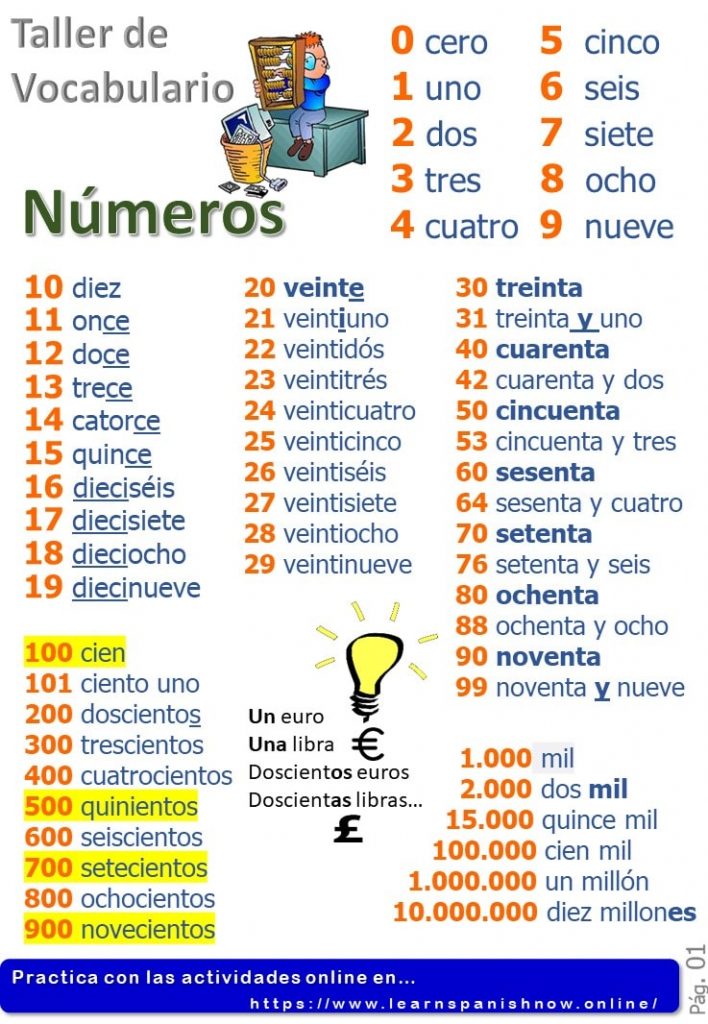Numbers in Spanish -LOS NÚMEROS EN ESPAÑOL- aren’t difficult to learn, you just have to pay attention to some patterns.
Like in English we can organice them into two main groups: cardinal numbers (the one that we are going to see today) and ordinal numbers (click on the link to learn them).
Rember that numbers are everywhere, so you need to use the Spanish numbers confidently. If you want to review all the numbers, read the tips below and, most importantly, practice with our quizzes. Let’s start!

How to say numbers in Spanish
1. UNO and numbers ending in «uno», such as 21 or 91, change to agree with the following noun. They drop the final –o before a masculine noun and have the feminine form «una»: Tiene cuarenta y un años (He is forty-nine years old). El libro cuesta veintiuna libras (the book costs twenty-one pounds).
2. From 11 to 15 all end in –ce: once, doce, trece, catorce, quince.
3. From 16 to 19 have a different pattern, starting with diez (ten). They were originally diez y seis (ten and six), diez y siete (ten and seven), but become contracted into one word: dieciséis, diecisiete, dieciocho, diecinueve.
4. From 21 to 29 are also contracted numbers, with the final “e” of veinte (twenty) changing to “i”: veintiuno …. veintinueve.
5. Notice that the following numbers have a written accent: dieciséis (16), veintidós (22), veintitrés (23), veintiséis (26).
6. From 30 to 90 all end in –nta and have y (and) between the tens and units: treinta y cinco (35), cincuenta y ocho (58), noventa y nueve (99).
7. 100 is just written CIEN.
8. Ciento, not cien, is used before a number smaller than 100: ciento doce (112), ciento ochenta y cinco (185)…
9. Ciento adds -s in the plural, and doscientos, trescientos… novecientos, agree with their noun: quinientos gramos (5oo grams), ochocientas libras (800 pounds)…
10. There is no «y» and between hundreds and tens: trescientos veinte (320), novecientos doce (912), but novecientos sesenta y dos (962)…
11. Mil (1.000) never changes and never has «un» a before it: dos mil (2.000), cinco mil trescinetos veinticinco (5.325)…
12. Un millón (1.000.000) y un billón (1.000.000.000.000) have regular plurals: millones, billones. They are followed by «de» when used alone before a noun:
Un millón de euros
Cinco millones de libras esterlinas.
Un billón de dólares.
Let's practice the Spanish Numbers
Now you can practice what you have just learned with our exercises below, you can also practice more numbers by listening to the podcast «¿Cuánto cuesta la ropa?«. Remember you can contact your tutor with any question you have about numbers in Spanish. Don’t you have a Spanish personal tutor yet?